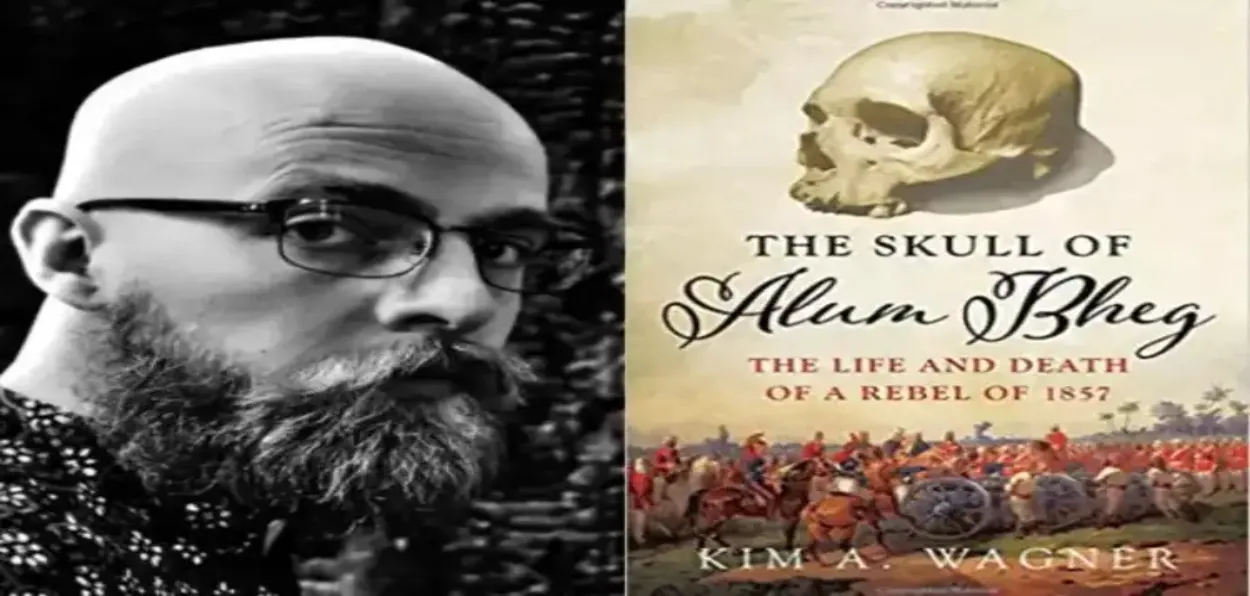Kanpur, UTTAR PRADESH / BRITISH INDIA:

The skull of a martyr Sepoy Alam Baig of the first war of Indian independence in 1985 must be brought to India for burial at the site where he was blown into pieces with a cannon for rebelling against the British Army in 1857.
This campaign is being run by British Professor Kim A. Wagner, who teaches Global and Imperial History at Queen Mary University of London and is also the author of the book The Skull of Alum Bheg: The Life and Death of a Rebel of 1857.
Prof Kin Wagner is an authority on the subject as he has published several books like ‘Thuggee: Banditry and the British in Early Nineteenth-Century India’, ‘The Great Fear of 1957: Rumours, Conspiracies and the Making of the Indian Uprising’, and ‘Amritsar 1919: An Empire of Fear and the Making of a Massacre’.
Wagner says this grisly war trophy was found in a pub in south-east England in 1963. The owner handed it over to him in 2014 and he published this book on Alum Bheg in 2017.
Wagner says the skull was brought to Ireland by someone from the British authorities and later changed hands.
“The handwritten note found with it revealed the skull to be that of Alum Bheg, an Indian soldier in British service who had been blown from a cannon for his role in the 1857 Uprising. His head had been brought back as a grisly war trophy by an Irish officer present at his execution,” writes Kim Wagner.
Prof. S. Sehrwat of the Department of Anthropology, Punjab University had said in a statement that during the revolution of 1857, Havaldar Alam Baig (the way it is spelled in India) was captured and blown up with cannon. His skull was found in England.
He said Wenger had told him about this.
A complete search record of the skull has been found. The scientists are now keen to do a DNA test to ensure the identity of the skull. It is known that Alam Baig was from the Kanpur area of Uttar Pradesh and even a family has claimed him to be their ancestor.
According to Prof Dineshwar Chaubey, who teaches genetics at BHU, Varanasi, two types of tests can be done on Alam Baig’s skull. A Kanpur family living in Delhi has claimed to be related to Alam Baig. Their genes can be matched with it.
Kim Wagner and other historians are campaigning for givinh a due burial to at some place along the India-Pakistan border, where he was done to death.
Wagner says the British had accused Baig of killing a Christian priest family and it was a fabricated charge. The record says that he was a sepoy of the 46th regiment of the Bengal Native Infantry.
Kim Wagner believes that it is the right time to bury Havaldar Alam Baig in his country, at the same spot where he fought in the Battle of Trimu Ghat on the banks of the Ravi River in the border region between India and Pakistan.
He said, “I do not consider the return of Alam Baig’s skull as political. My aim is only to bring the mortal remains of Alam Baig to his homeland so that he may rest in peace long after his death.
Although the historian’s statement has also passed a long time, there is no progress in this matter to date. It is also waiting for the time when the skull of one of the great sons of India will be brought to India and buried in the soil here.”
The Natural History Museum confirmed its likely authenticity and Wagner, with little evidence to go on, traced Bheg’s history using various sources.
source: http://www.awazthevoice.in / Awaz, The Voice / Home > Story by ATV / by Ghaus Siwani, New Delhi / posted by Aasha Khosa / September 02nd, 2023








